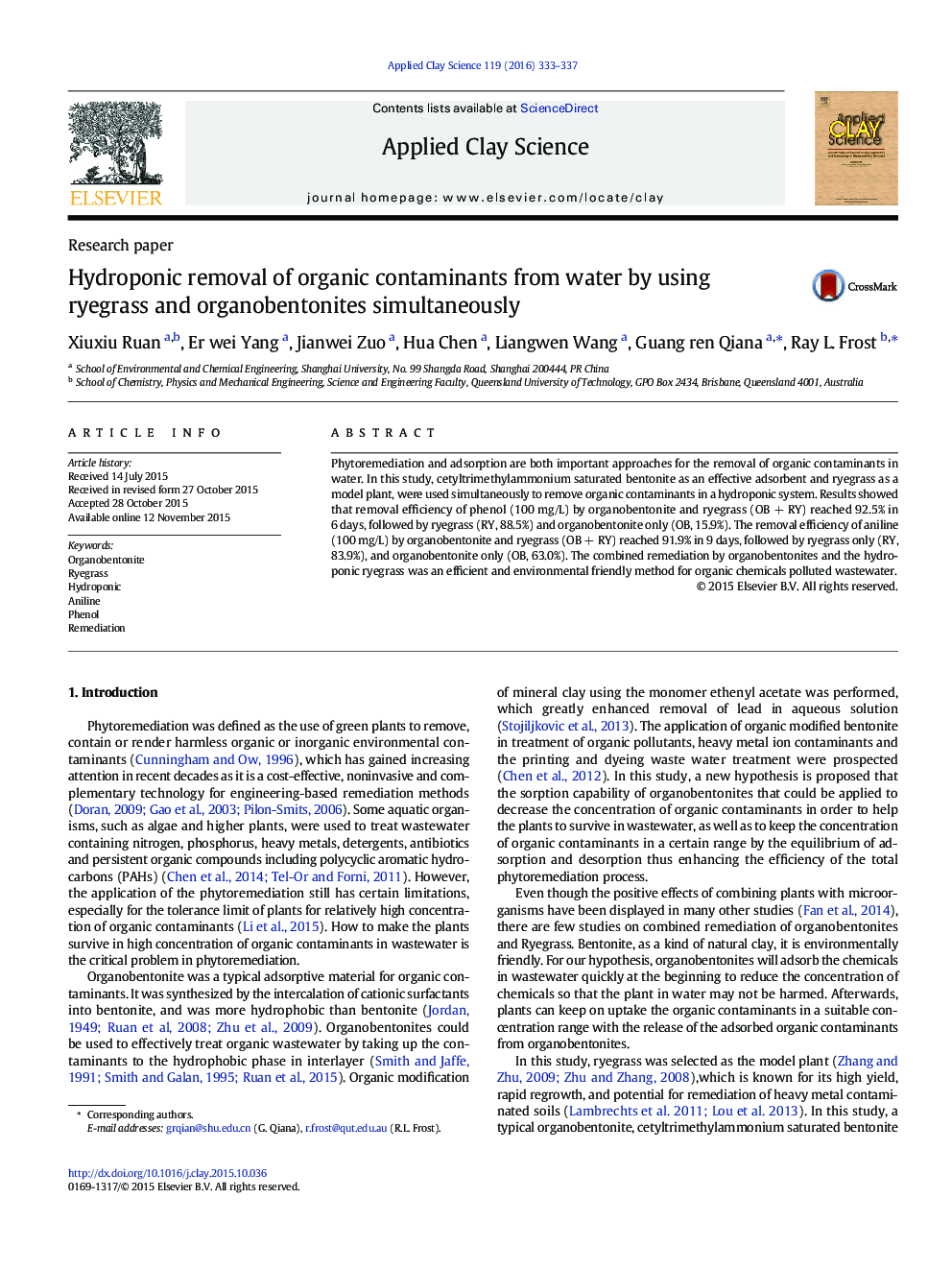| Article ID | Journal | Published Year | Pages | File Type |
|---|---|---|---|---|
| 1694226 | Applied Clay Science | 2016 | 5 Pages |
•The removal of recalcitrant organics is of prime importance.•The application of organobentonites is an important mechanism.•Remediation by organobentonites and the hydroponic ryegrass was an efficient method for organics from wastewater.
Phytoremediation and adsorption are both important approaches for the removal of organic contaminants in water. In this study, cetyltrimethylammonium saturated bentonite as an effective adsorbent and ryegrass as a model plant, were used simultaneously to remove organic contaminants in a hydroponic system. Results showed that removal efficiency of phenol (100 mg/L) by organobentonite and ryegrass (OB + RY) reached 92.5% in 6 days, followed by ryegrass (RY, 88.5%) and organobentonite only (OB, 15.9%). The removal efficiency of aniline (100 mg/L) by organobentonite and ryegrass (OB + RY) reached 91.9% in 9 days, followed by ryegrass only (RY, 83.9%), and organobentonite only (OB, 63.0%). The combined remediation by organobentonites and the hydroponic ryegrass was an efficient and environmental friendly method for organic chemicals polluted wastewater.
Graphical abstractFigure optionsDownload full-size imageDownload as PowerPoint slide
